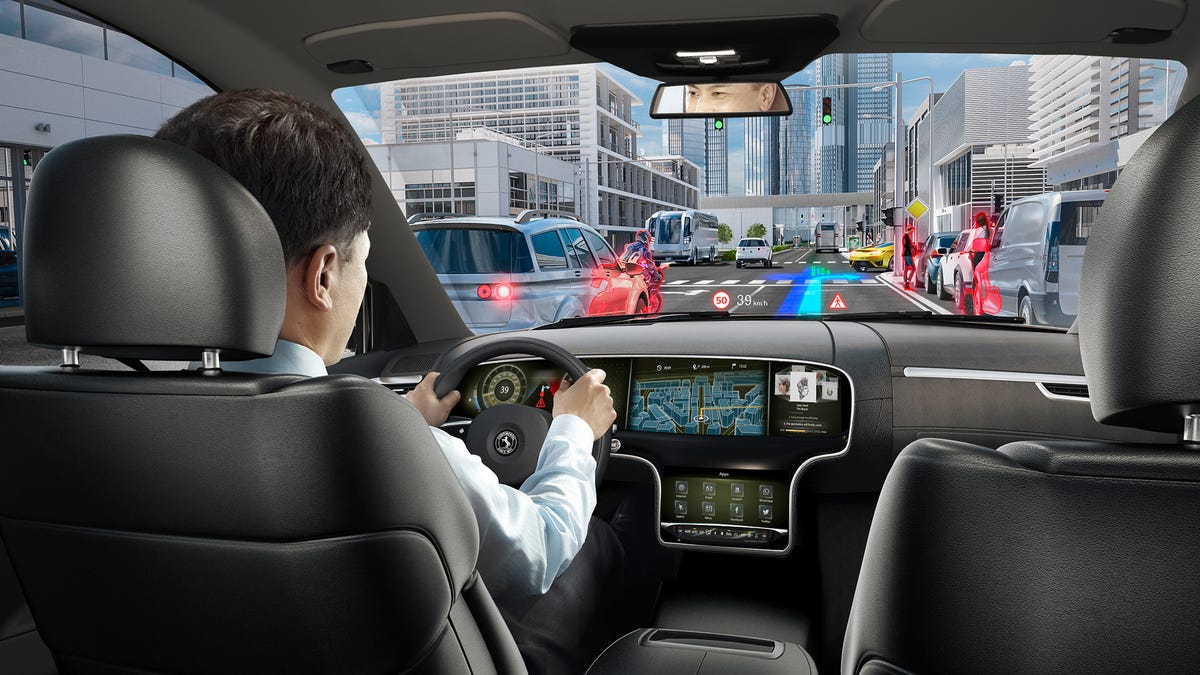Augmented reality in the car steps toward production at CES 2017
Automotive equipment suppliers Harman, Continental and Visteon show augmented reality concepts, projecting contextual driving information on the windshield.

In a clear trend at CES 2017, three automotive equipment makers presented augmented reality (AR) concepts for the car, which could greatly enhance safety by placing warnings and environment information right on the windshield. Rather than distracting, this imagery serves to highlight objects around the car.
Harman includes AR as a feature of its Life-Enhancing Intelligent Vehicle Solution (LIVS); Continental showcased AR as the fruits of a partnership with holographic projector maker DigiLens; and Visteon made AR part of a new head-up display concept. All of these companies supply electronics to major automakers, and used CES to show off their latest technologies.
Head-up displays, which show vehicle information at the base of the windshield within the driver's view, have gained traction in recent years, appearing on many car models. These displays typically show vehicle speed and navigation directions, so the driver doesn't need to look away from the road. AR goes beyond head-up display technology by using GPS and sensors to pick out objects in the car's environment, calling out those objects for the driver. AR can be very helpful in urban environments where the amount of traffic, pedestrians and signage becomes overwhelming.
Harman's system can place street signs over intersections, greatly helping drivers.
Harman showed off its LIVS concept in a modified Chrysler Pacifica, using a large dashboard-mounted LCD to show how AR would work, among other features of the system. Running a simulated video on the screen, the system added markers for other cars detected by sensors, letting the driver know if they were going faster or braking, and painted street signs over the video at intersections. This latter feature seemed very useful as it is not always easy to find street signs in the real world, causing distraction for drivers.
Although much of the information Harman showed on its AR system would come from the car's sensors, information like street signs will rely on having a good GPS signal giving the car's actual location. Harman said it is working on projecting this system in a head-up display, to make it easier for the driver to see its information.
Continental focused on the projection technology that could make AR a reality. Its partner DigiLens develops compact projectors with high-resolution displays, typically for augmented reality glasses. With DigiLens technology, Continental proposes a head-up display that projects over a larger area of the windshield than current projectors. As such, it could show a variety of sensor-derived information about the car's environment.
Continental shows how a projector from partner DigiLens can add useful driver information to the windshield.
The Continental system is current technology, which could be implemented by an automaker in a new generation model soon.
Visteon, a maker of instrument cluster displays and infotainment systems for the automotive industry, brought a demonstration to CES of a sensor-driven head-up display that painted simple graphics on the windshield. In its simulated driving example, the system painted imagery on other cars on the road, which highlighted potential dangers for a driver. The color-coded imagery showed, for example, a red graphic around a car ahead that was braking. It could also highlight pedestrians on the side of the road.
From these AR demonstrations, it becomes clear that the projection technology is now production-ready. These suppliers showed off new ideas in using car sensor data, and AR makes an important new safety feature.

